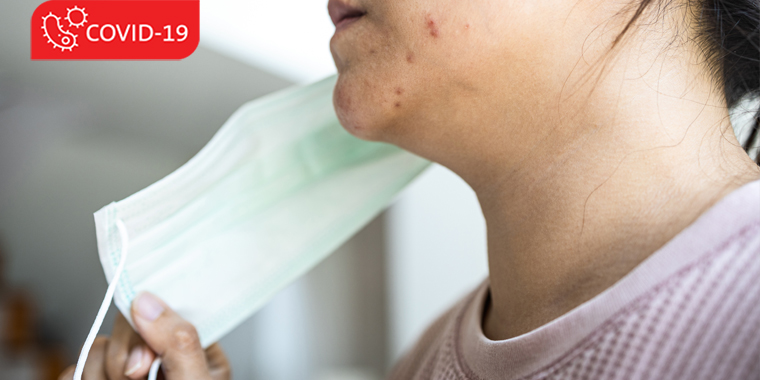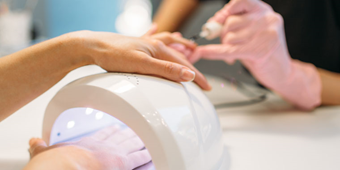When Your Face Mask Gives You Maskne

Answer a few questions and we'll provide you with a list of primary care providers that best fit your needs.
You can thank COVID-19 for adding another new word to your vocabulary: maskne. That’s short for mask acne, or the side effect of your mask rubbing against your face. Premier Health Now asked Mark Williams, MD, with Jamestown Family Medicine how to best deal with this latest virus-related complication.
“Maskne occurs for two reasons,” he says. “It’s a combination of the rubbing of the mask on your skin and the trapping of your skin’s oils and body sweat.”
Here are five things you can do to help prevent maskne:
- Choose a 100 percent cotton mask, which may be kindest to the skin, says the American Academy of Dermatology. Protection from virus transmission is improved if the mask has two layers, Dr. Williams adds.
- Wash your mask every day to prevent a build-up of sweat, oils, and make-up.
- “Keep your face clean, but don’t wash it too often or you can dry out your skin and make the problem worse,” says Dr. Williams. He recommends using a non-soap cleanser like Noxzema® or Neutrogena® Acne Wash, then follow with a very mild moisturizer.
- Cut down on make-up. “Some make-up contains chemicals that can really irritate the skin when it’s trapped behind a mask,” Dr. Williams warns.
- Remove your mask whenever it’s safe to do so. This lets your skin breathe, says Dr. Williams. “I’ve seen people driving alone in their car wearing a mask. That’s a good time to remove it and get some air flowing to your face.”
If the acne gets too bad, Dr. Williams suggests consulting a physician or health care provider. “Treatment would be similar to treating regular acne,” he says. “I’d suggest benzoyl peroxide, but use a much less potent solution than 10 percent, which is typical for acne. That’s because when you treat your skin and then cover it with a mask, the mask actually multiplies the potency of the benzoyl peroxide.”
Answer a few questions and we'll provide you with a list of primary care providers that best fit your needs.
Source: Mark Williams, MD, Jamestown Family Medicine; American Academy of Dermatology




